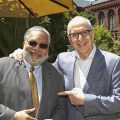A few of my favorite things: Brian Nicklas
Smithsonian staff and volunteers work countless hours in the halls of our museums and research centers, in the field, at the Zoo, in our gardens and facilities. We are privileged to spend time with some of the nation’s most cherished treasures as we go about our duties. Sometimes, these unique experiences find a special place in our own personal stories. Amy Kehs introduces Brian Nicklas and a few of his favorite things.
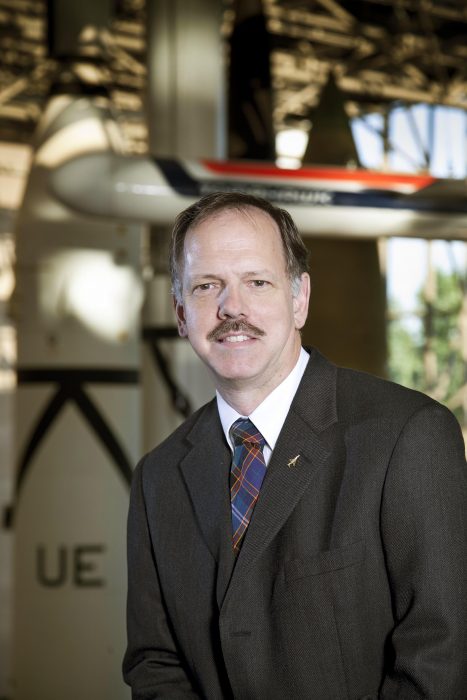
Brian Nicklas, museum specialist and archivist at the Smithsonian’s National Air and Space Museum. (Phot by Eric Long)
It was late in the day and employees in the National Air and Space Museum’s Archives Department were packing up and heading for the door when the phone rang. Despite the lateness of the hour, Brian Nicklas answered the phone. The gentleman on the other end of the line said he was downstairs in the museum at the payphone and he was hoping to do some research on the interiors of flying boats. Brian told him that he’d be happy to pull the archival materials for him to look through and that he’d be right down to sign him in and escort him upstairs. Brian rode the elevator down to the first floor and was quite surprised when he recognized the man waiting for him at the security desk—singer Jimmy Buffett.
As an alumnus of Embry-Riddle Aeronautical University, Brian Nicklas understands how passionate and enthusiastic aviators can be which, no doubt, is why he agreed to help the well-known visitor with his search late that evening. This year is Brian’s 30th anniversary at the Smithsonian. Thirty years ago, he was balancing his time between job hunting for his aviation journalism career and working at a local photo lab. In his spare time, he would go to the Archives at NASM to poke around just for fun and do some freelance research. He was there so often that the reference archivist at the time, Larry Wilson, said teasingly, “You know, if you were a volunteer then you could pull your own materials and it would save me quite a bit of time.” So, Brian became a volunteer. Thirty years later, he is a Museum Specialist in Aeronautics and a research archivist, spending three days at the Udvar-Hazy Center’s Archives and two days at the downtown National Air and Space Museum Archives. Due to the upcoming renovations at NASM, his schedule is now full time at Udvar-Hazy.
I asked Brian what he likes most about working at the Smithsonian. “I love the people. I love getting a chance to meet fellow employees at other museums and I also love the people that come to visit the Archives. My Smithsonian co-workers are so interesting, and the visitors to the Archives are always surprising me with their knowledge and the stories they tell. I love hearing about what they are researching and why. It’s those moments and interactions that you least expect that make this job a lot of fun,” he said.
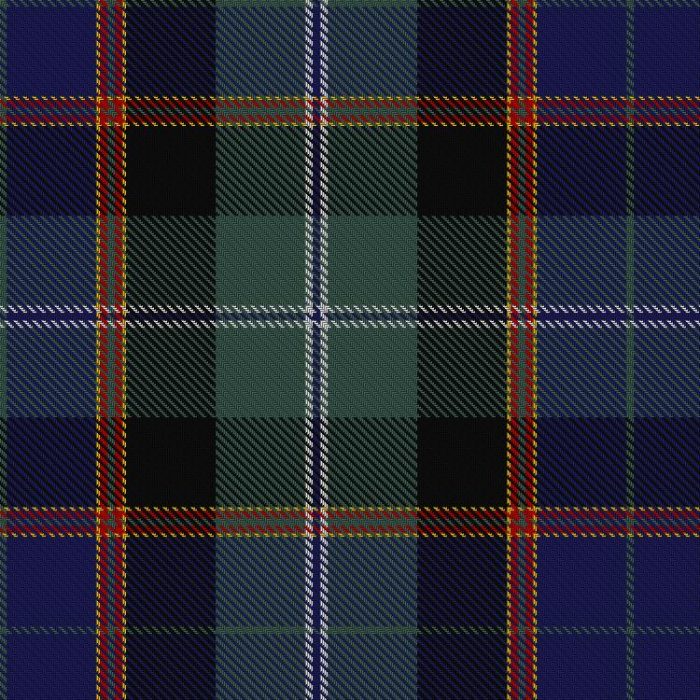
This tartan was designed specifically for the Smithsonian as part of the Scotland program at the 2003 Folklife Festival.
Brian’s first favorite thing at the Smithsonian is the Smithsonian’s Folklife Festival that takes place outdoors on the National Mall every summer. Brian admits that working the reference desk means he doesn’t get to visit the surrounding museums and monuments on his doorstep as much as he’d like but getting outside to visit the Folklife Festival is always a treat and a highlight. His favorite program was the Scotland program in 2003. He especially loved the Smithsonian tartan that was designed for the occasion and loves wearing his Smithsonian tartan tie. “I really regret that I didn’t splurge and get the kilt,” he says with a grin.
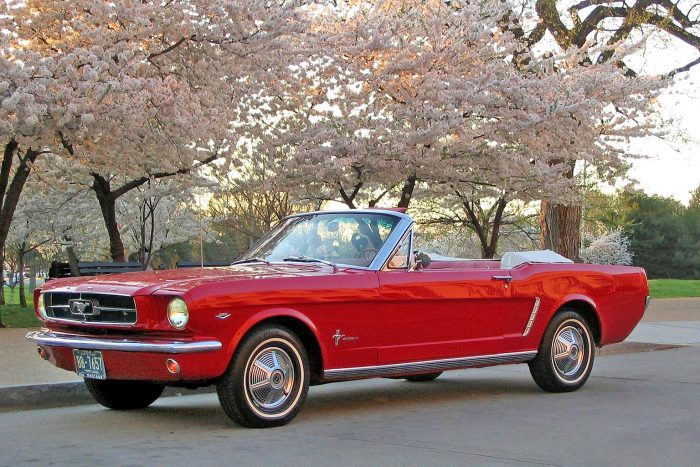
Brian Nicklas’ restored 1964 Ford Mustang. (Photo courtesy Brian Nicklas)

Tucker Automobile designed by Preston Tucker in 1948, now a part of the Smithsonian’s National Museum of American History’s collection. (Smithsonian photo)
Brian’s second favorite thing is the Tucker automobile at the National Museum of American History. In addition to airplanes, Brian loves cars. In fact, he owns his own automobile treasure, a fully restored 1964 convertible Mustang. Brian and his brother refurbished the Mustang from a rusty heap to a shiny, brilliant, cherry-red gem. You can often see Brian driving this historic beauty in parades all across the region; it has even appeared in movies. So, I wasn’t surprised that the Tucker automobile made Brian’s list. The car in the Smithsonian collection is no. 39 of just 51 made by Tucker and his partners in 1948. The car never entered full production but Tucker’s innovative design set the trend for post-war automobiles. The Smithsonian’s Tucker has an interesting history of its own. It was seized by the U.S. government during a narcotics investigation and later transferred to the Smithsonian’s collection. Its previous owners had repainted it and reupholstered it from its original condition.
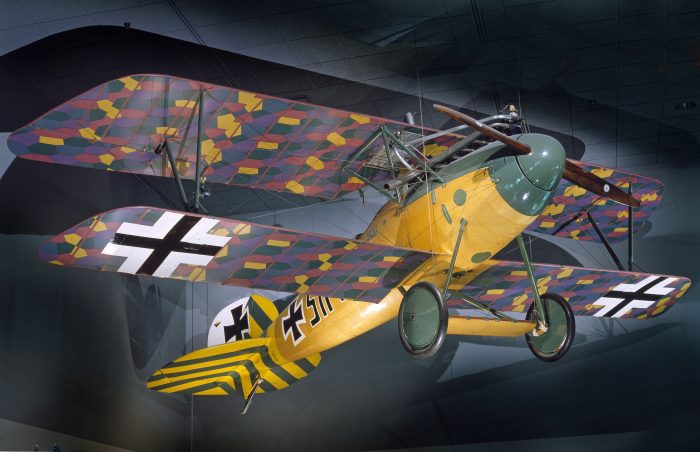
German Albatross DVa on display at the Smithsonian’s National Air and Space Museum. (Photo by Eric Long)
Brian’s third favorite thing at the Smithsonian is an airplane, pf course. He admits it was pretty hard to pick a favorite but he finally chose the World War I German fighter plane, the Albatross D.Va. Built in 1917-1918, these fighter planes were used extensively by the German Air Service, a favorite of German ace pilots. Made of wood and covered in colorful fabric, the National Air and Space Museum’s biplane catches the eye of many visitors because of its bright colors. Visitors can see the Albatross D.Va. hanging in the museum’s “Legend, Memory and Great War in the Air” exhibition on the second floor.
Brian’s unique path from aviation research enthusiast to museum specialist is an asset to everyone who visits the National Air and Space Museum’s Archives. He shares researchers’ excitement about their project and dives right in to help locate the materials they need.
Posted: 26 September 2018
-
Categories:
Air and Space Museum , American History Museum , Feature Stories

